Personenzählung in Kaufhäusern: Wie Daten den Einzelhandel neu definieren
Personenzählung in Kaufhäusern: Wie Daten den Einzelhandel neu definieren
Betritt man an einem Samstagnachmittag ein modernes Kaufhaus, sieht man ein faszinierendes Schauspiel Kundinnen und Kunden, die zwischen Abteilungen hin- und hergehen, an Tischen mit Auslagen verweilen, Produkte vergleichen und sich in der Nähe der Kassen unterhalten.
Für Filialleiter ist dieses Kommen und Gehen nicht nur Alltagsgeschehen - es ist eine Geschichte, die erzählt werden will.
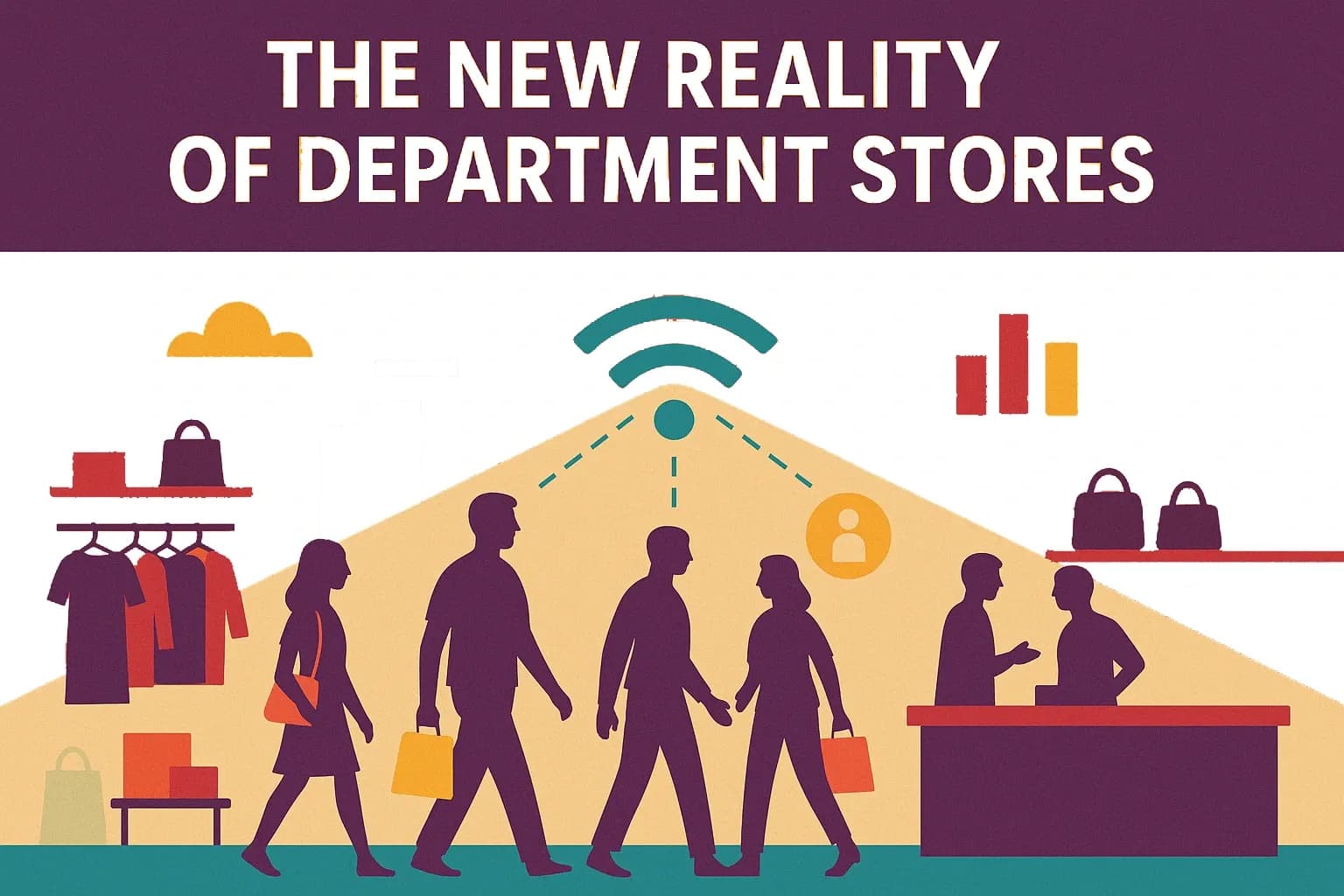
Die Kunst der Personenzählung
m Mittelpunkt dieser Geschichte steht die Personenzählung - die Kunst und Wissenschaft, zu messen, wie sich Besucherinnen und Besucher in physischen Räumen bewegen.
Gerade für Kaufhäuser, in denen Layout, Personalplanung und Werbemaßnahmen stark vom Kundenverhalten abhängen, ist die Personenzählung in Kaufhäusern längst keine nette Zusatzfunktion mehr.
Sie ist zu einer strategischen Notwendigkeit geworden.
Die neue Realität der Kaufhäuser
Kaufhäuser waren schon immer dynamische Ökosysteme. Jede Etage, jede Abteilung und jeder Gang hat seinen eigenen Rhythmus.
Doch in einer Welt, in der Onlinehändler jeden Klick und Scroll erfassen, entsteht für physische Geschäfte eine Datenlücke: Sie wissen, wie viele Kundinnen und Kunden gekauft haben aber nicht, wie viele hätten kaufen können.
Hier setzt die Personenzählung an. Durch die Erfassung anonymer Daten über Besucherzahlen, Verweildauer und Bewegungsmuster schließen Kaufhäuser die Lücke zwischen Besucherpräsenz und Verkaufsleistung.
Es geht nicht mehr nur darum, Köpfe am Eingang zu zählen, sondern zu verstehen, warum sich Kundinnen und Kunden im Laden so verhalten, wie sie es tun.
Warum Personenzählung in Kaufhäusern wichtiger ist als je zuvor
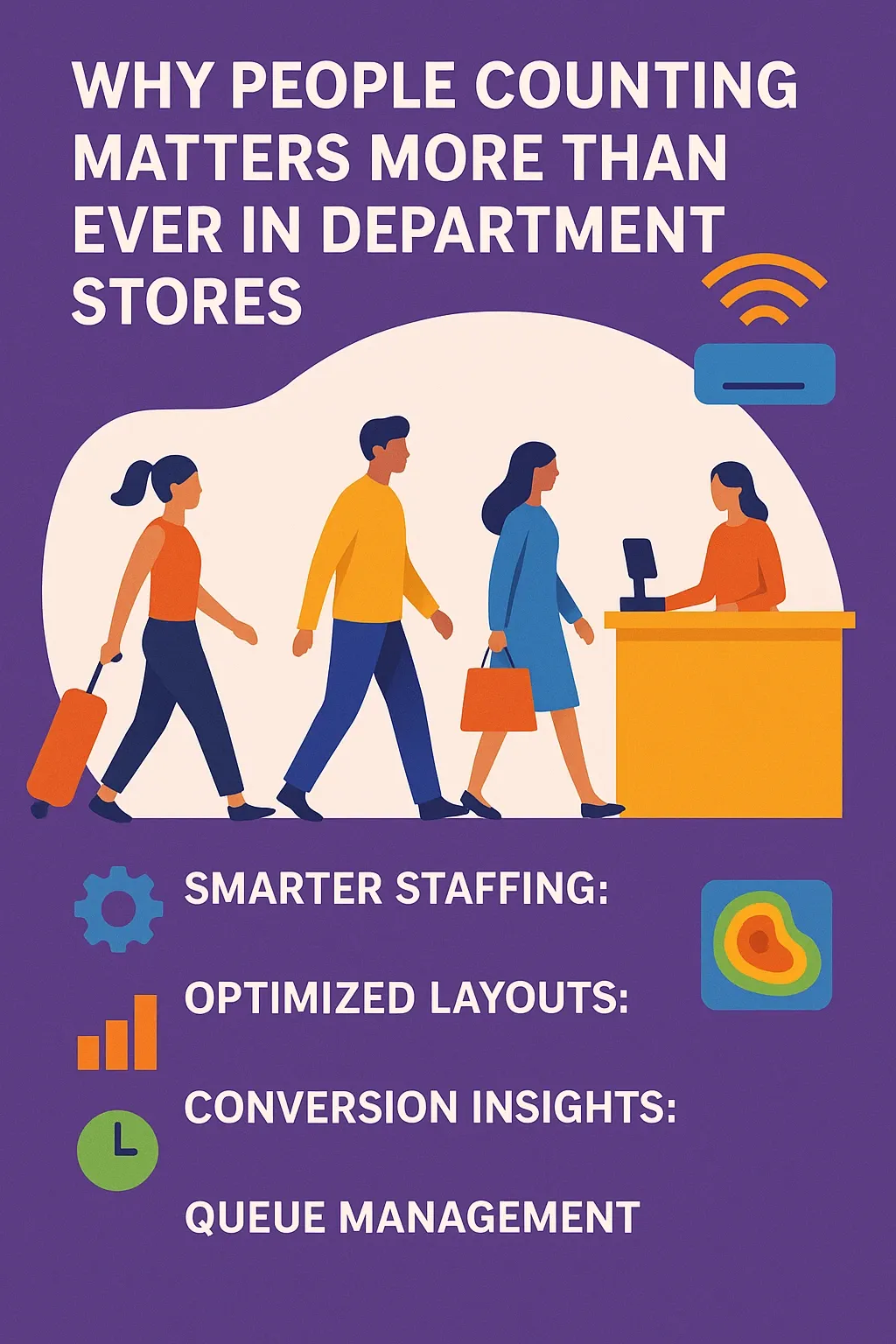
Kaufhäuser sind komplexe Gebilde mit engen Margen. Mehrere Eingänge, zahlreiche Etagen, hunderte Mitarbeitende und ständig wechselnde Warenpräsentationen erschweren Entscheidungen.
Ohne zuverlässige Daten können selbst kleine Ineffizienzen erhebliche Umsatzeinbußen verursachen.
Mit präziser Personenzählung für Kaufhäuser lassen sich folgende Vorteile erzielen:
- Intelligentere Personalplanung: Durch die Kenntnis von Stoßzeiten können Mitarbeitende effizienter eingesetzt werden.
- Optimierte Ladenlayouts: Heatmaps zeigen, welche Abteilungen besonders stark frequentiert werden und welche übersehen bleiben.
- Conversion-Insights: Der Vergleich von Besucherzahlen und Verkaufsdaten deckt ungenutzte Potenziale auf.
- Warteschlangenmanagement: Die Überwachung von Wartezeiten hilft, Engpässe zu vermeiden.
- Energieeffizienz: Prognosen zu Belegungsdichten ermöglichen nachhaltigen Betrieb etwa durch Anpassung von Beleuchtung oder Klimaanlagen.
Jeder Datenpunkt wird so zum Hinweis in einer größeren Erzählung nicht nur, wer gekommen ist, sondern wie sie sich bewegt, verweilt und entscheidet.
Die besonderen Herausforderungen von Kaufhäusern
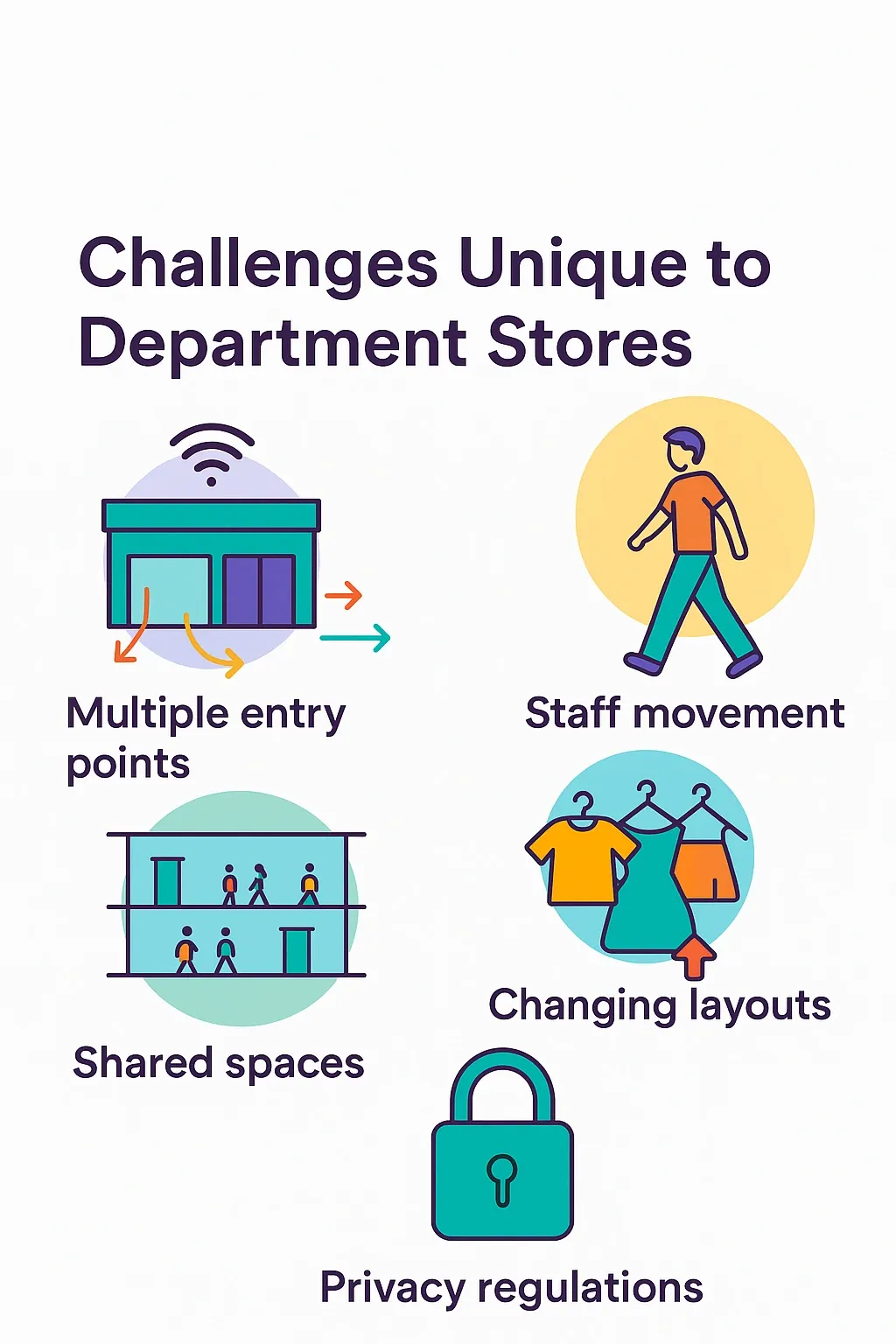
Im Gegensatz zu kleineren Boutiquen oder Supermärkten sind Kaufhäuser mehrstöckige, komplexe Umgebungen mit Chancen, aber auch Hürden.
- Mehrere Eingänge: Besucher können durch verschiedene Türen eintreten oder wiederkehren, was die Zählgenauigkeit erschwert.
- Geteilte Flächen: Befindet sich das Kaufhaus in einem Einkaufszentrum, kann Durchgangsverkehr die Daten verfälschen.
- Mitarbeiterbewegung: Mitarbeitende und Servicepersonal erzeugen „Rauschen“, das herausgefiltert werden muss.
- Regelmäßige Umbauten: Saisonale Anpassungen erfordern eine Neukalibrierung der Sensorik.
- Datenschutz: Im Zeitalter von DSGVO und ethischer Datennutzung ist Anonymität Pflicht.
Die gute Nachricht: Moderne Technologien lösen diese Probleme zuverlässig.
Wie moderne Personenzählung funktioniert
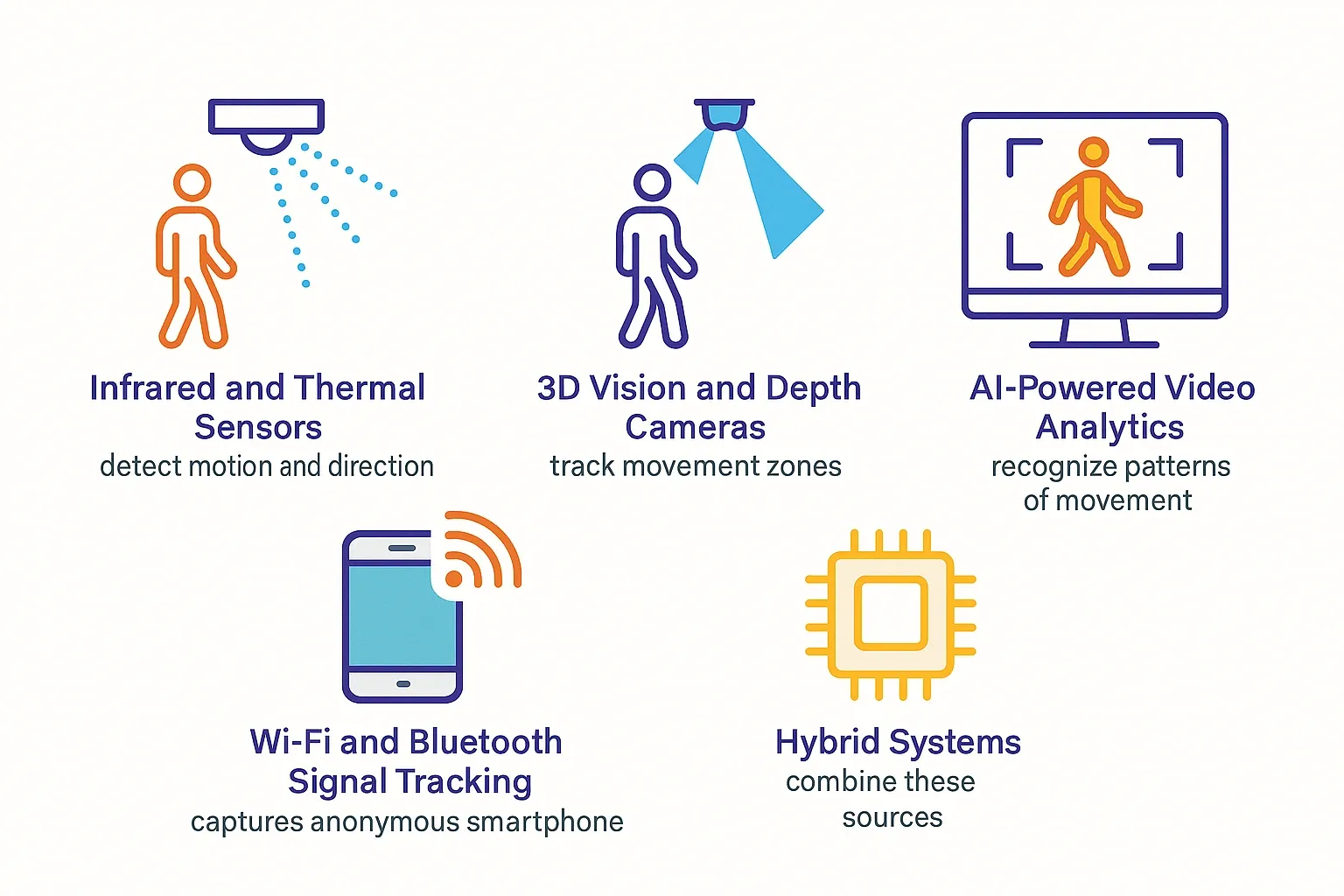
Heutige Systeme zur Personenzählung in Kaufhäusern kombinieren verschiedene Sensortechnologien, um ein präzises Bild des Kundenflusses zu zeichnen:
- Infrarot- und Thermalsensoren erkennen Bewegung und Laufrichtung - ideal für Eingangsbereiche.
- 3D-Kameras und Tiefensensoren erfassen Bewegungen in Zonen, ohne Persönlichkeitsdaten zu speichern.
- KI-gestützte Videoanalyse erkennt Bewegungsmuster statt Gesichter.
- Wi-Fi- und Bluetooth-Tracking misst anonymisierte Smartphonesignale, um Aufenthaltszeiten und Laufwege zu kartieren.
- Hybridsysteme wie Ariadne kombinieren mehrere Quellen, um auch bei hohem Besucheraufkommen genaue Ergebnisse zu liefern.
Der entscheidende Fortschritt ist die kontextuelle Intelligenz:
Von einfachem „Zählen“ hin zum Verstehen von Absichten und Interaktionen.
Ein Kunde, der zehn Sekunden vor einem Kosmetikdisplay verweilt, erzählt eine andere Geschichte als jemand, der vorbeigeht.
Von Rohdaten zu echten Erkenntnissen
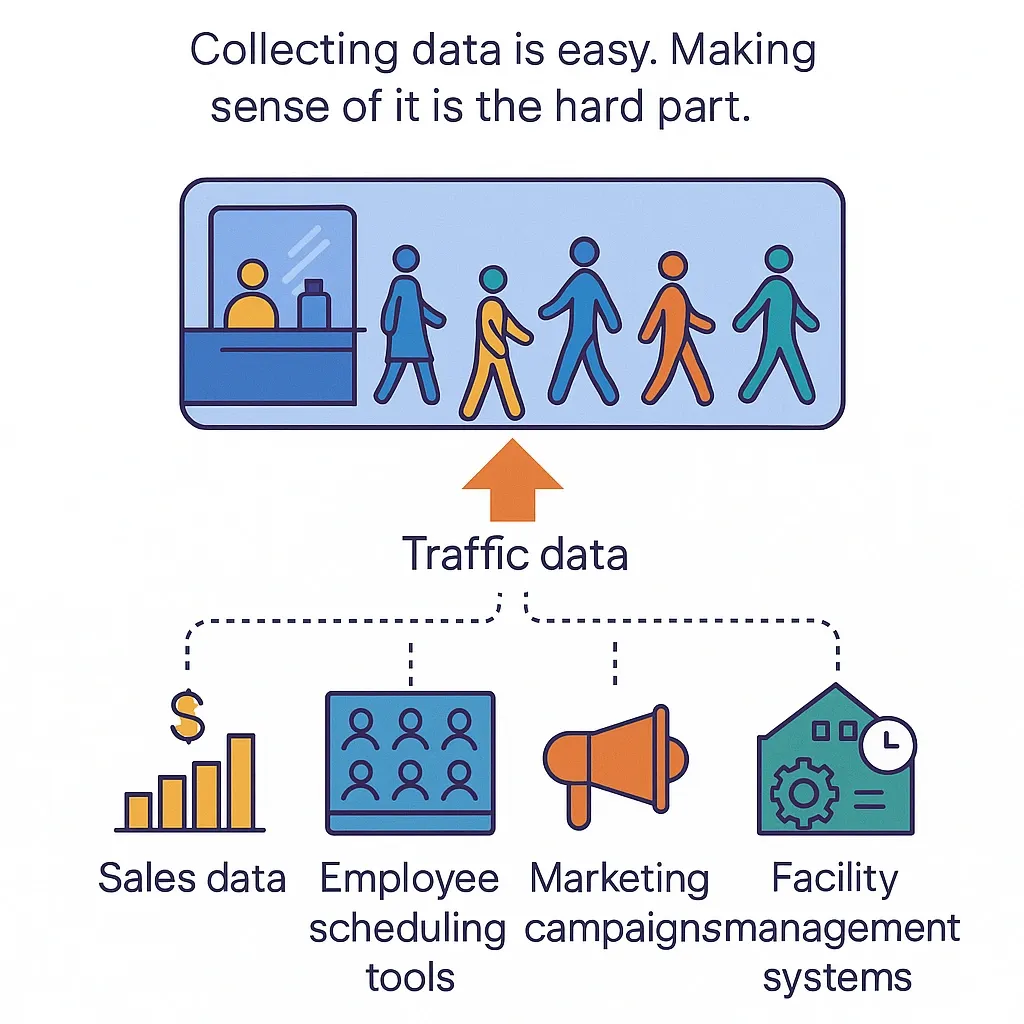
Daten zu sammeln ist leicht sie zu interpretieren ist die wahre Kunst.
Wirkungsvolle Personenzählungs-Analysen in Kaufhäusern entstehen erst, wenn die Besucherdaten mit anderen Systemen verknüpft werden:
- Verkaufsdaten: Vergleich von Besucherströmen und Transaktionen zur Berechnung von Conversion Rates.
- Personaleinsatzplanung: Abgleich von Personalzeiten mit tatsächlichem Kundenaufkommen.
- Marketingkampagnen: Messung des Einflusses von Aktionen auf Besucherströme.
- Gebäudemanagement: Automatische Anpassung von Klima, Reinigung oder Beleuchtung an aktuelle Belegung.
Diese Verknüpfungen verwandeln Rohdaten in ein lebendiges Abbild der Geschäftsdynamik - sie zeigen nicht nur, was passiert, sondern warum.
Wichtige Kennzahlen für Kaufhäuser
Um den größten Nutzen aus der Personenzählung im Kaufhaus zu ziehen, sollten Verantwortliche folgende Metriken im Blick behalten:
- Besucherfrequenz pro Zone und Etage
- Verweildauer in einzelnen Bereichen
- Conversion Rate pro Abteilung
- Wartezeiten an Kassen und Servicepunkten
- Energieverbrauch in Abhängigkeit der Auslastung
Diese Kennzahlen bilden die Grundlage für fundierte, datengetriebene Entscheidungen.
Praktische Anwendungsfälle
1. Layout-Optimierung
Analyse von Bereichen mit hoher oder niedriger Besucherfrequenz ermöglicht die gezielte Umgestaltung von Laufwegen und Produktplatzierungen.
2. Marketing-Effektivität
Kampagnenerfolg lässt sich an Traffic-Uplift messen führte das Schaufenster oder das Event tatsächlich zu mehr Besucherinnen und Besuchern?
3. Kundenerlebnis
Die Messung der Verweildauer in Umkleiden oder Servicezonen zeigt, wo Abläufe verbessert werden können.
4. Betriebseffizienz
Echtzeitdaten zu Besucherzahlen unterstützen nachhaltige Ressourcennutzung, indem Beleuchtung oder Reinigung bedarfsgerecht gesteuert werden.
Die Zukunft: Prognostische und adaptive Intelligenz
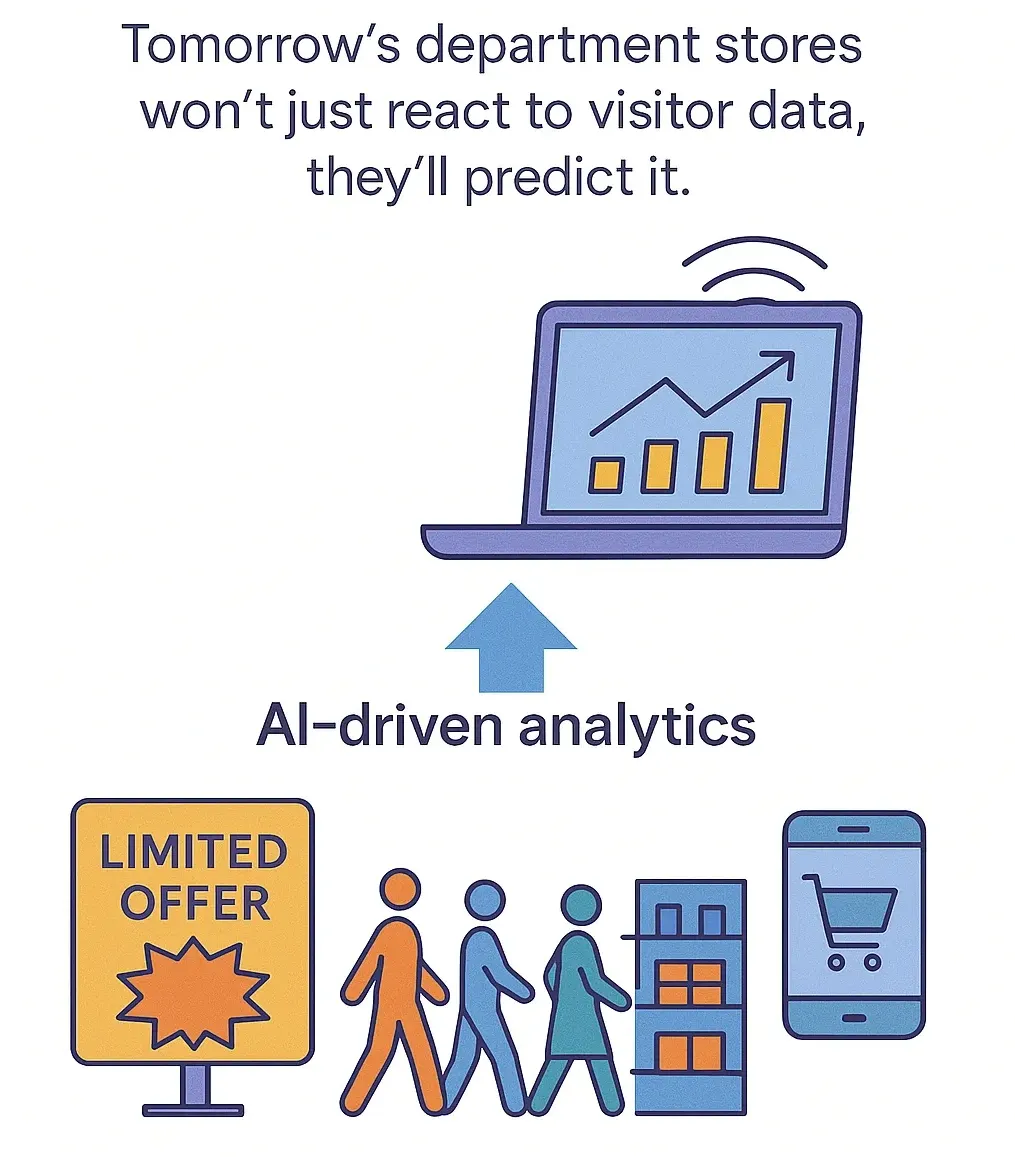
Die Kaufhäuser der Zukunft reagieren nicht nur auf Daten sie antizipieren sie.
KI-gestützte Systeme können bereits Besucherströme vorhersagen, Personalbedarf planen oder Sortimente optimieren, bevor Engpässe entstehen.
In Kombination mit digitaler Beschilderung oder App-Integration könnten Layouts oder Aktionen dynamisch angepasst werden etwa, um Kunden in ruhigere Zonen zu lenken oder Sonderangebote hervorzuheben.
Wir bewegen uns von der Zählung von Menschen hin zu einem Verständnis von Menschen und schließlich zu einer besseren Bedienung in Echtzeit.
Fazit
Die Personenzählung in Kaufhäusern hat sich von einer einfachen Besucherzählung zu einem strategischen Werkzeug für Erlebnisgestaltung, Effizienz und Profitabilität entwickelt.
So kann der stationäre Einzelhandel in einer datengetriebenen Welt bestehen - nicht, indem er den menschlichen Kontakt ersetzt, sondern indem er ihn mit Erkenntnissen stärkt.